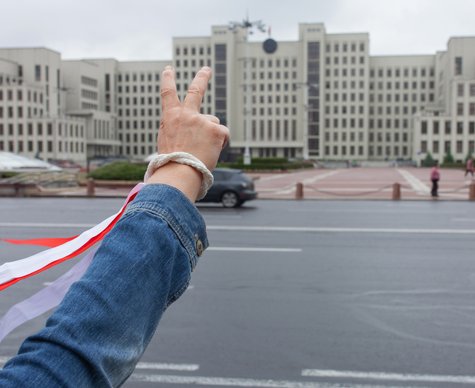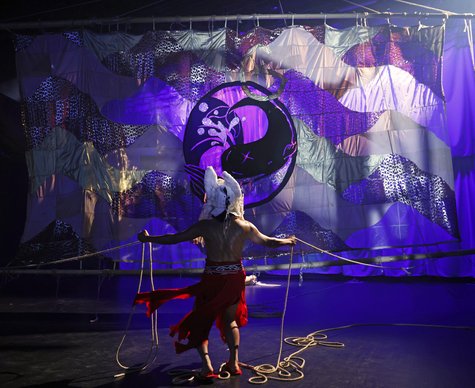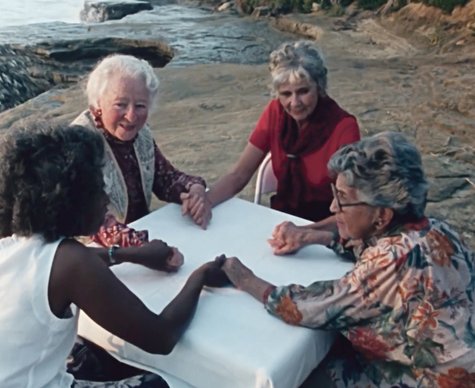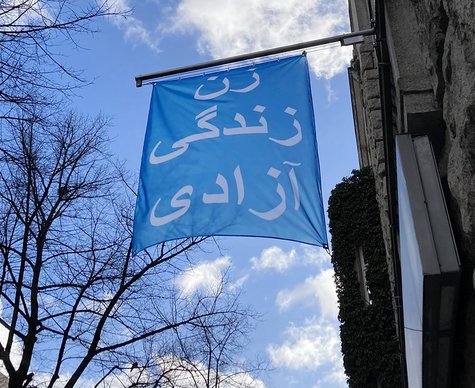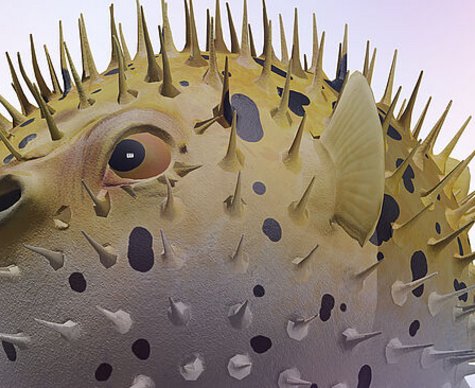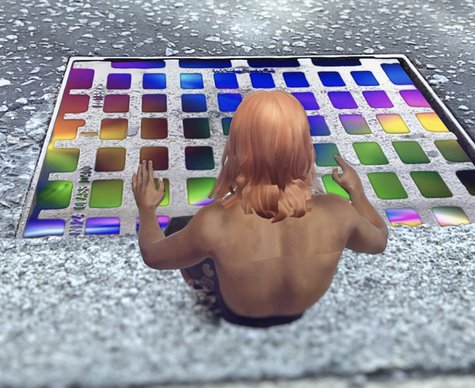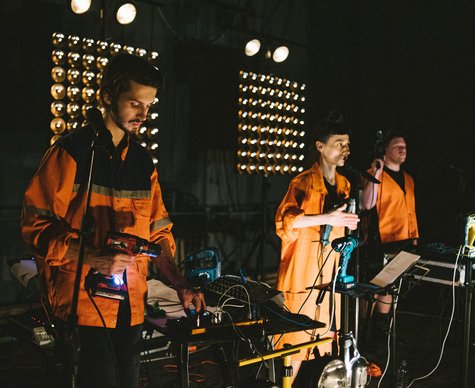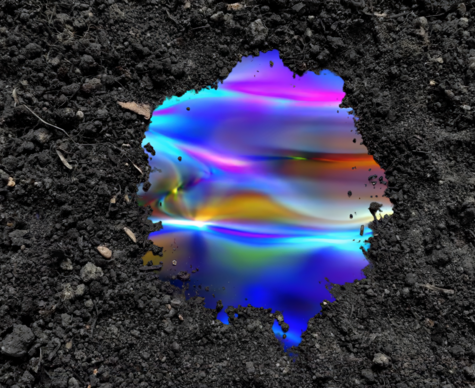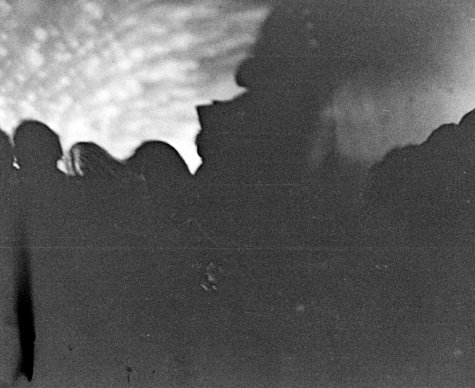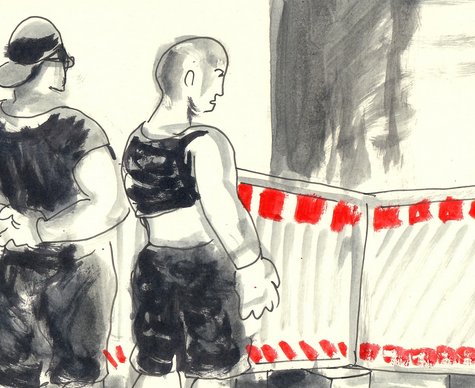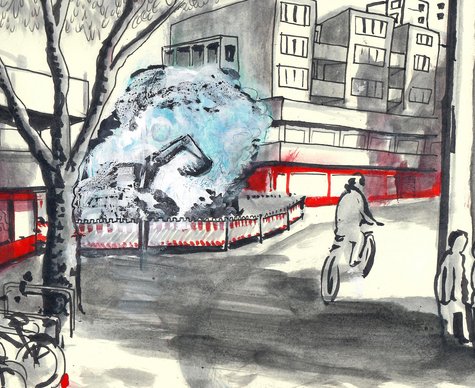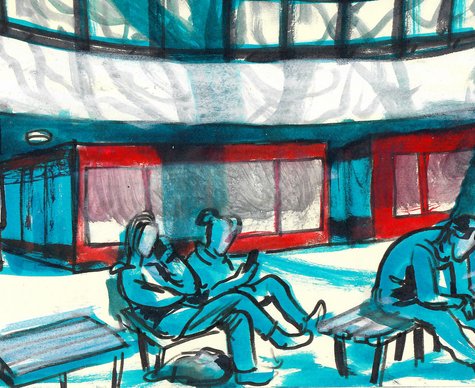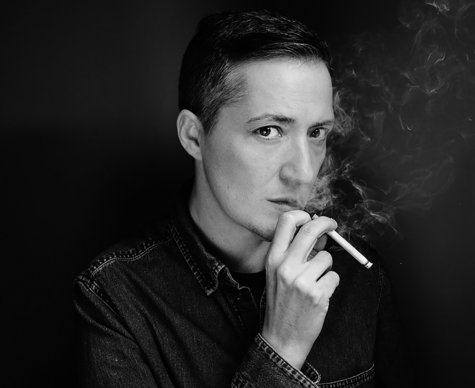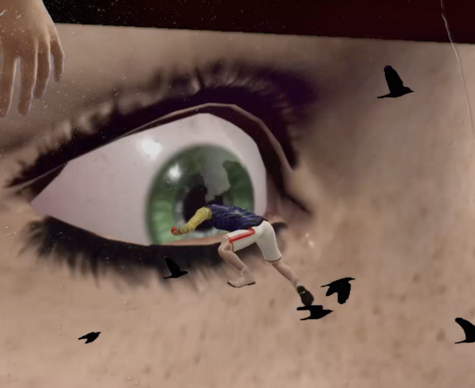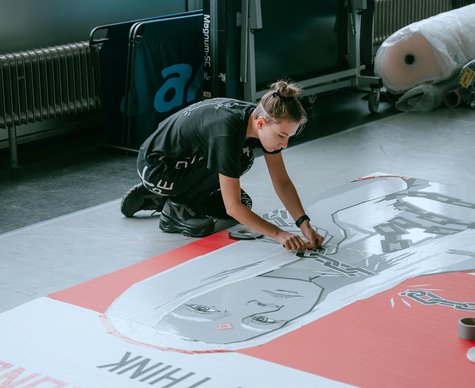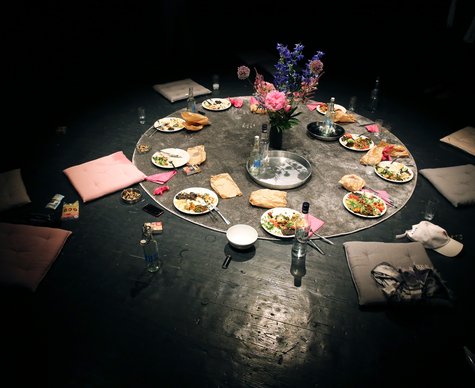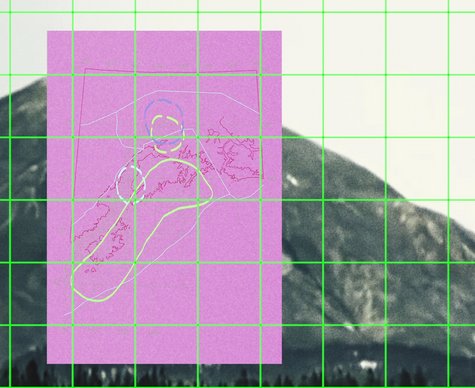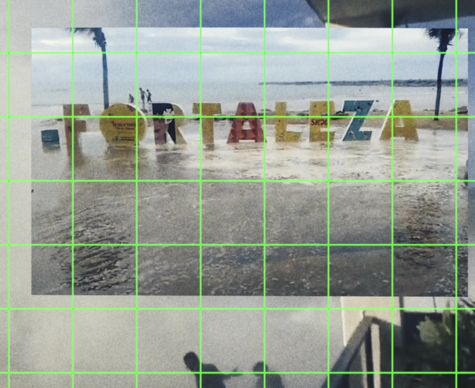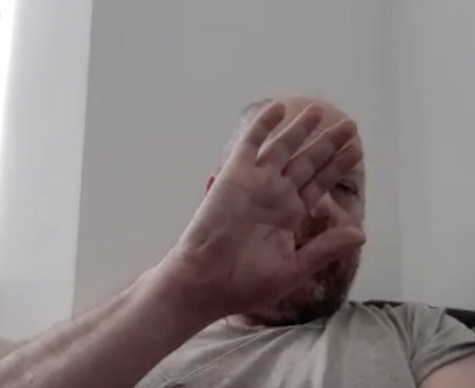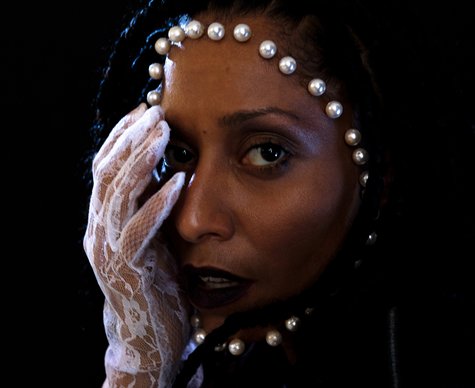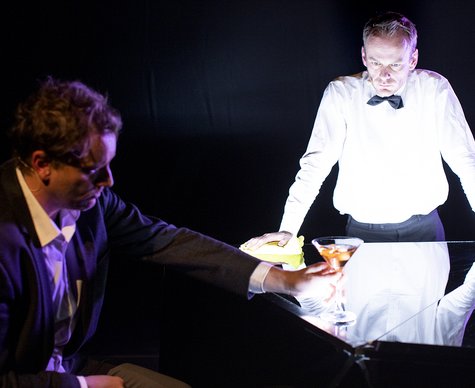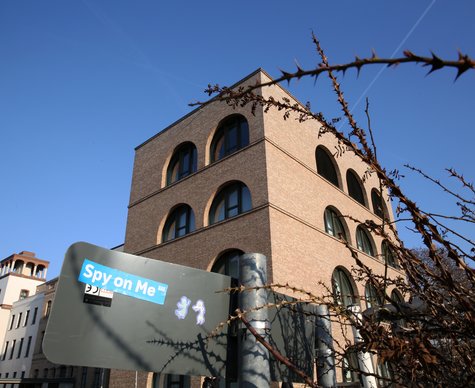Idea & Choreography: Kadir “Amigo” Memiş / Artistic Collaboration: Denis “Kooné“ Kuhnert / Dancers: Emmanouela Dolianiti, Diego De La Rosa, Juan Tirado / Dramaturgy: Rain Kencana / Music & Composition: Milian Vogel / Nevzat Akpinar / Stage: Markus Butkereit / Light: Sebastían Zamponi / Production: Manon Lemoine / Costumes: Jale Kustalouglu
Kadir “Amigo” Memiş calls himself an “urban nomad.” His works are inspired by the sounds, smells, and lights of big cities. In “Back to Zero” the artist, choreographer and dancer searches for hidden places that he explores and makes his own through acts of dance and writing.
BOUZUQΣΣ – an homage to the graffiti scene
By Lukas Fuchsgruber
Kadir “Amigo” Memiş was born in Turkey and moved to Berlin at the age of ten. Here he became part of the hip hop scene, its music, its dance and its visual art: graffiti. He assumed the pseudonym ‘Amigo’. Out of his experience with urban art and his early familiarity with traditional folk art he developed his own hybrid art, the ZEYBREAK: Zeybek and Breakdancing. Suing both dance and music he combines the urban and the rural, present and past culture, motifs of the Near East and the western metropolis. The next step is BOUZUQΣΣ, when graffiti is brought into the equation.
There is something to learn from graffiti: an artistic form that makes use of letters, but not to disseminate words or language. Instead it is about names, and the style is a way to charge, accentuate or even overload these names. Graffiti starts and ends in wild, encoded signs of letters. From the abstraction of the letter to the abstraction of a Lettrist organism. The graffiti pioneer RAMMELLZΣΣ has written that the tag in graffiti is “not a signature but a sign-overture”. It goes from the starting point of the signature back to the empty sign, “Back to Zero”. Berlin’s answer to RAMMELLZΣΣ is BOUZUQΣΣ. BOUZUQΣΣ reworks the history of Berlin jazzy graffiti, BOUZUQΣΣ is the experiences of urban nomads, and BOUZUQΣΣ is the culmination of these influences.
BOUZUQΣΣ signifies a certain legacy of urban culture, coming from hip hop, to assume and inscribe oneself in the culture’s explosive potential. And to mix it with your own biography, with your own legacy. Turkish “bozuk”, Greek “bouzouki”, means broken art, broken bodies, broken sounds, “broken head” to designate the Zeybek, Anatolian partisans. The principle of brokenness from bouzouki/bozuk meets the iconoclasm of wildstyle graffiti, the legacy of the graffiti pioneer RAMMELLZΣΣ.
Bouzouki + Bozuk + RAMMELLZΣΣ = BOUZUQΣΣ
In 2005 RAMMELLZΣΣ came to Berlin, and he died in 2010. His ideas of wild letters, souped up into artistic battle machines, his connection of graffiti to excessive costumes, all of this lives on and has been inspiring a new generation of artists. Dance, costumes, painting, sound in BOUZUQΣΣ are based on the principle of collage developed by RAMMELLZΣΣ and push the sum of the diverse materials to iconoclasm and overload. And to using this energy.
For some BOUZUQΣΣ might symbolize an homage to the graffiti scene, for others the history of urban nomads will call to mind their own histories of migration or experiences of interculturalism. For behind all the artistic encodings and decodings is a quite simple experience, the experience of searching and the sensation of the sum when things fall into place.
Amigo’s concepts of ZEYBREAK and BOUZUQΣΣ are summations of hip hop and Anatolian partisan culture. Historical rural and contemporary urban culture meet in the transtemporal histories of the individual as the history of a whole world, birth, conflict, liberation.
Cast
Dates
Credits
Production: Kadir “Amigo” Memiş. Co-production: HAU Hebbel am Ufer. Funded by: Hauptstadtkulturfonds.
Thanks for input and support to: Claudia Iglesias Ungo, Jakob Yaw, Iven Krüger, Rico Schumann, Adrian Nabi, Akim Akim, Daniel Weissbach, Thomas Bratzke, Graz Diez, Lukas Fuchsbgruber, Edward Birzin, Pablo Brandt, Rammelzee. With kind support from Theaterhaus Mitte.
Location
Outdoor (start point: HAU2)
Hallesches Ufer 34, 10963 BerlinThere are two marked parking spots in front of the building. (in Großbeerenstraße).






























